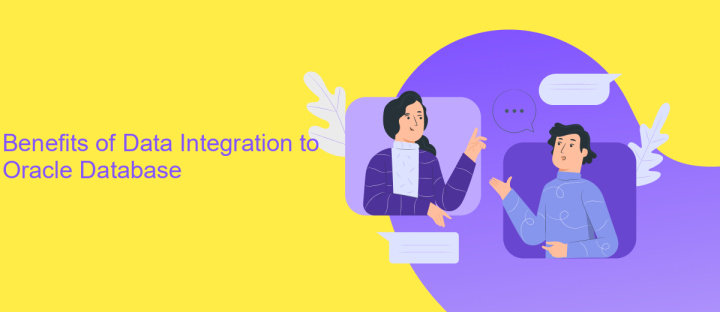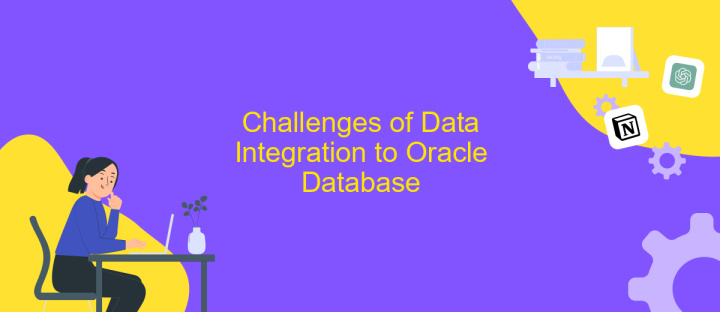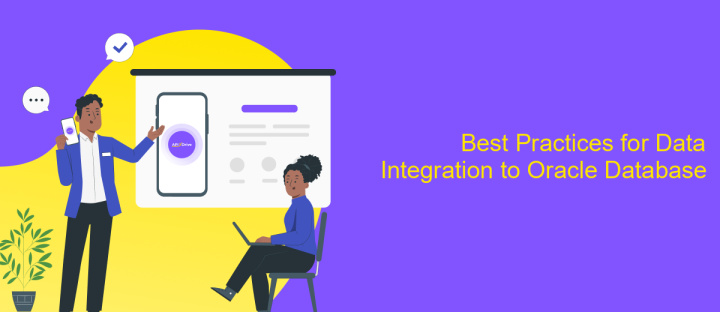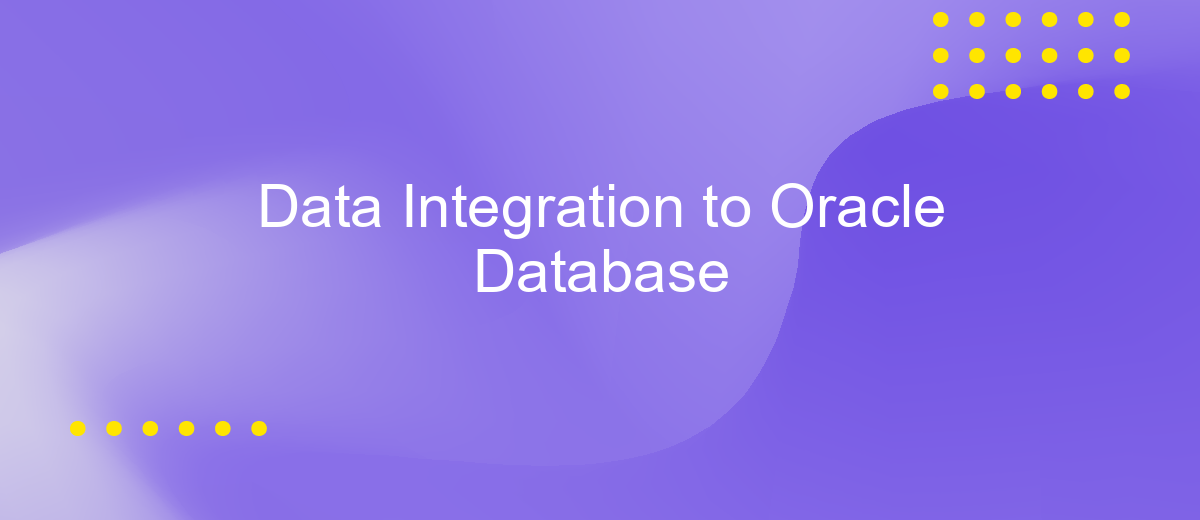Data Integration to Oracle Database
In today's data-driven world, seamless integration of diverse data sources into a unified platform is crucial for informed decision-making. Oracle Database stands out as a robust solution for effective data integration, offering advanced tools and technologies to streamline the process. This article explores the key strategies and best practices for integrating data into Oracle Database, ensuring accuracy, efficiency, and scalability.
Introduction
Data integration is a critical aspect of modern database management, enabling organizations to consolidate information from various sources into a unified Oracle Database. This process ensures that data is accurate, consistent, and accessible, thereby enhancing decision-making and operational efficiency. As businesses grow, the complexity of managing disparate data sources increases, making effective data integration indispensable.
- Improved data quality and consistency
- Enhanced decision-making capabilities
- Streamlined business processes
- Increased operational efficiency
Oracle Database offers robust tools and technologies for seamless data integration, catering to diverse organizational needs. Whether integrating data from legacy systems, cloud applications, or third-party databases, Oracle provides comprehensive solutions that ensure data integrity and security. By leveraging these capabilities, businesses can unlock valuable insights, drive innovation, and maintain a competitive edge in the market.
Benefits of Data Integration to Oracle Database

Integrating data into an Oracle Database offers numerous benefits, enhancing both operational efficiency and decision-making processes. By consolidating data from various sources, businesses can achieve a unified view of their information, facilitating more accurate analytics and reporting. This integration reduces data silos, ensuring that all departments have access to consistent and up-to-date information, which is crucial for strategic planning and performance tracking.
Moreover, tools like ApiX-Drive simplify the integration process, making it accessible even for non-technical users. ApiX-Drive provides a user-friendly interface to set up and manage data flows between different systems and Oracle Database. This service supports a wide range of applications, ensuring seamless data transfer and synchronization. As a result, businesses can save time and resources, allowing their teams to focus on more critical tasks, such as data analysis and decision-making, rather than on manual data entry and troubleshooting integration issues.
Challenges of Data Integration to Oracle Database

Data integration into an Oracle Database presents several significant challenges that organizations must address to ensure seamless operations. These challenges can range from data quality issues to complex data transformations, and they often require specialized tools and expertise to manage effectively.
- Data Quality: Ensuring the accuracy, consistency, and completeness of data being integrated is crucial. Poor data quality can lead to erroneous insights and decisions.
- Data Mapping: Aligning data from disparate sources to the correct schema in Oracle Database can be complex, requiring detailed mapping and transformation rules.
- Scalability: As data volume grows, maintaining performance and efficiency during integration processes can become challenging.
- Security: Protecting sensitive data during transfer and integration is paramount, necessitating robust encryption and access control measures.
- Real-Time Integration: Achieving real-time data integration can be difficult due to latency issues and the need for continuous data synchronization.
Addressing these challenges requires a combination of strategic planning, the right technological tools, and skilled personnel. By understanding and mitigating these issues, organizations can achieve more effective and efficient data integration into their Oracle Database systems.
Best Practices for Data Integration to Oracle Database

Effective data integration to Oracle Database requires careful planning and execution to ensure data accuracy, performance, and security. Start by assessing your data sources and understanding the data you need to integrate. This helps in designing an efficient data integration strategy tailored to your specific needs.
Next, choose the right tools and technologies for the integration process. Oracle provides various tools like Oracle Data Integrator (ODI) and Oracle GoldenGate, which can simplify and streamline the integration process. Selecting the appropriate tool depends on factors such as data volume, frequency of updates, and complexity of transformations.
- Ensure data quality by implementing validation checks and cleansing routines.
- Optimize performance by tuning your ETL processes and database configurations.
- Secure data by employing encryption and access controls.
- Monitor and maintain the integration process to catch and resolve issues promptly.
Regularly review and update your data integration strategy to adapt to changing business requirements and technological advancements. By following these best practices, you can achieve a robust and efficient data integration process that maximizes the value of your data in Oracle Database.


Conclusion
In conclusion, integrating data into an Oracle Database is a critical task that demands precision and efficiency. Successful data integration ensures that businesses can leverage their data for insightful decision-making and operational improvements. The process involves several steps, including data extraction, transformation, and loading (ETL), each of which must be meticulously managed to ensure data integrity and consistency.
Utilizing tools and services like ApiX-Drive can significantly streamline this process. ApiX-Drive offers robust capabilities for automating data flows between various systems and the Oracle Database, reducing the manual effort and potential for errors. By leveraging such tools, organizations can achieve seamless and reliable data integration, enabling them to focus more on analyzing and utilizing their data rather than on the complexities of data management. Ultimately, efficient data integration is key to maximizing the value derived from an Oracle Database, supporting better business outcomes and strategic growth.
FAQ
What is Data Integration with Oracle Database?
What are the common methods for integrating data into Oracle Database?
How can I automate data integration tasks with Oracle Database?
What challenges might I face during data integration with Oracle Database?
How can I ensure data security during integration with Oracle Database?
Apix-Drive is a universal tool that will quickly streamline any workflow, freeing you from routine and possible financial losses. Try ApiX-Drive in action and see how useful it is for you personally. In the meantime, when you are setting up connections between systems, think about where you are investing your free time, because now you will have much more of it.

